Overview
Here’s a lesson idea to involve children in planning the places they would like to have in their neighbourhood while giving them opportunities to explore in as many as THREE learning areas through an integrated approach.
Learning Areas | Learning Goals |
Aesthetics and Creative Expression (A&C) | LG3: Create art and music and movement using experimentation and imagination |
Discovery of the World (DOW) | LG1: Show an interest in the world they live in LG2: Find out why things happen and how things work through simple investigations |
Social and Emotional Development (SED) | LG4: Communicate, interact and build relationships with others |
| Refer to the Nurturing Early Learners (NEL) Framework, pp. 65 to 107, for more information on the learning areas and learning goals. |
|---|
Learning Objectives
Children will be given opportunities to:
- Find out more about the people and places in their neighbourhood.
- Make decisions as a class on the places they would like to have in their neighbourhood.
- Work together to create a 2- or 3-dimensional model of their neighbourhood.
#1 Finding out about places in their neighbourhood
Get your children to be familiar with places in their neighbourhood!
How?
- Go on a neighbourhood walk OR
- Show photographs of places in their neighbourhood
- Talk about the places in the neighbourhood with your children.
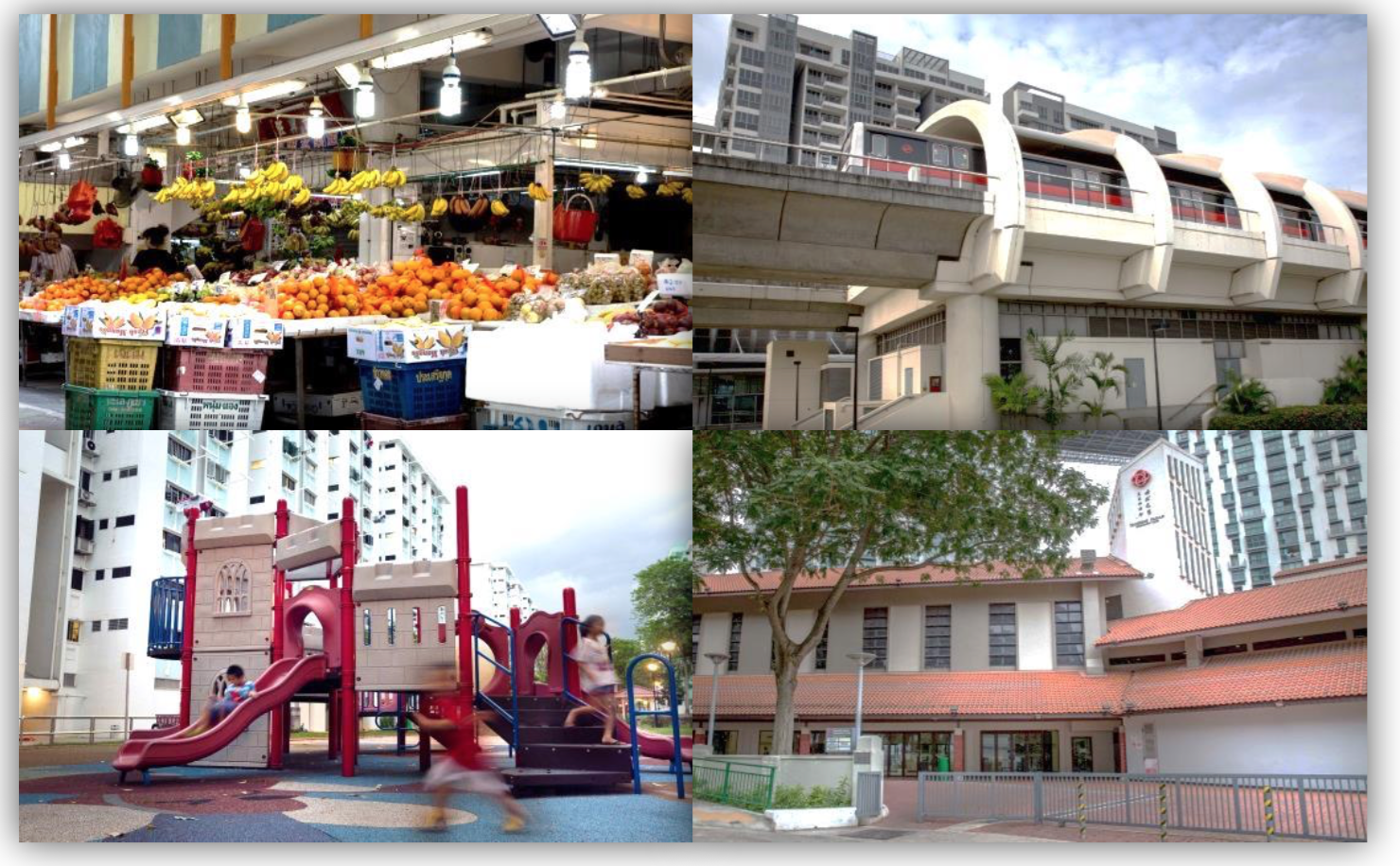
Examples of common places in a neighbourhood
After the neighbourhood walk, talk about the places in the neighbourhood by:
- Using photographs as visual cues to help children recall what they had observed
- Asking questions to facilitate the discussion
|
What types of questions are you asking? Using open-ended questions will help to engage children in discussion and sustain the conversation. Refer to the Nurturing Early Learners (NEL) Educators’ Guide, Volume 1 pp. 58 to 60, for more information on using questions. |
- What is this place?
- What can people do at this place?
- Why is it important to have a place like this in your neighbourhood?
Lastly, help your children to categorise the places (e.g., places to buy food, places to have fun etc.). This will help them to see connections between different things.
#2 Planning their neighbourhood
| Providing opportunities for children to reason and make decisions help to develop their logical thinking skills. |
Guide your children to think about:
- Places they would like to have in their neighbourhood (limit the number of places to help them reason and make decisions)
- Where they would like these places to be in their neighbourhood
How?
- Create a neighbourhood map.
- Limit the number of “empty” spaces on the map.
- Encourage your children to talk about and decide on the places they would like to have and where these places should be in their neighbourhood.
- Refer to the categories that arose from the class discussion (e.g., places to buy food, places to have fun etc.) to help your children make decisions.
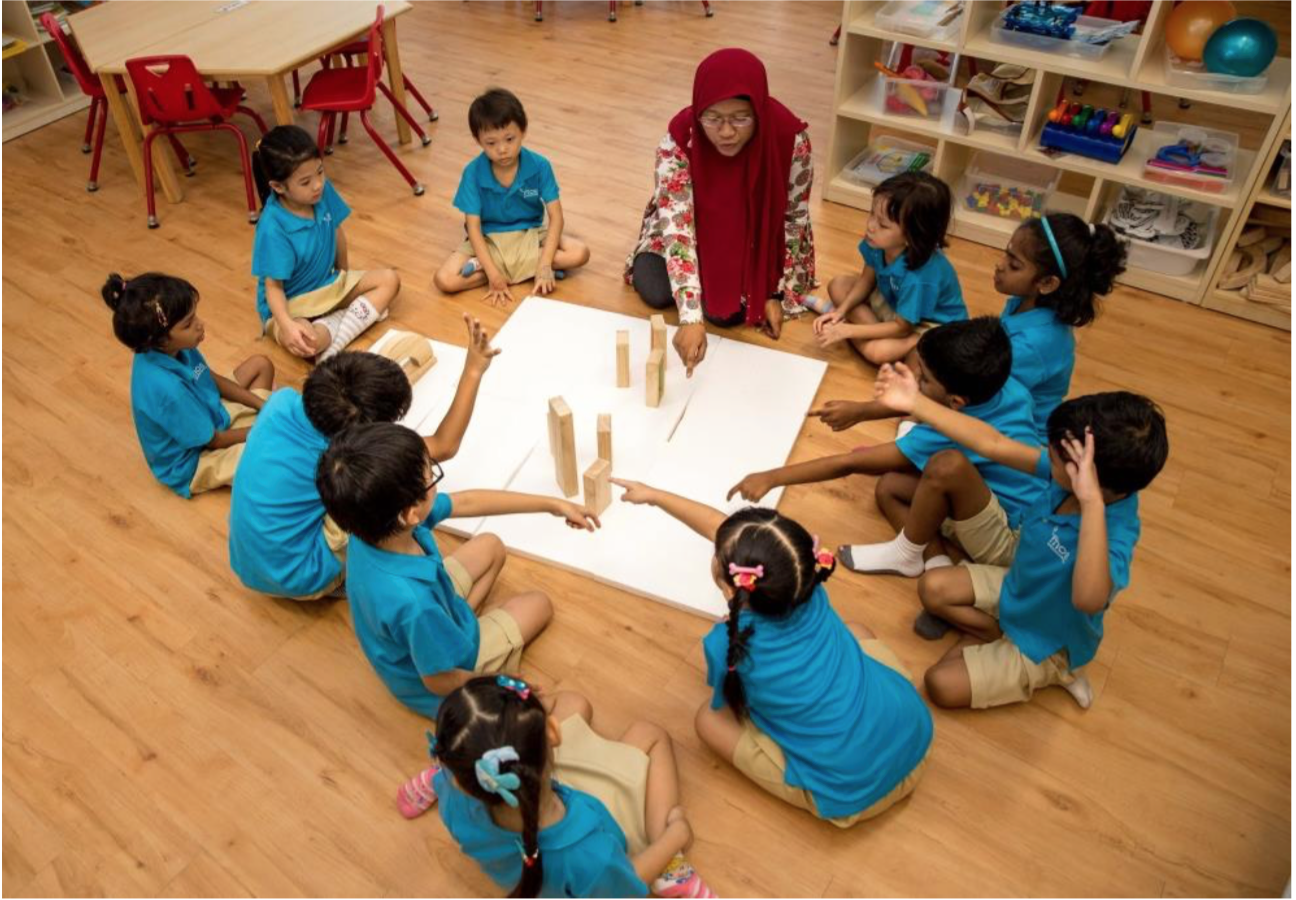
Creating a neighbourhood map using nine pieces of A3-sized cardboard
#3 Creating their neighbourhood
Let your children’s creativity flow by creating a model of their neighbourhood using different art and recyclable materials!
How?
- Get your children to work in small groups.
- Have each group work on one place in their neighbourhood by:
- Drawing / Painting OR
- Using recyclable materials to make a 3-dimensional model
How can you facilitate group work in your classroom? You can:
|
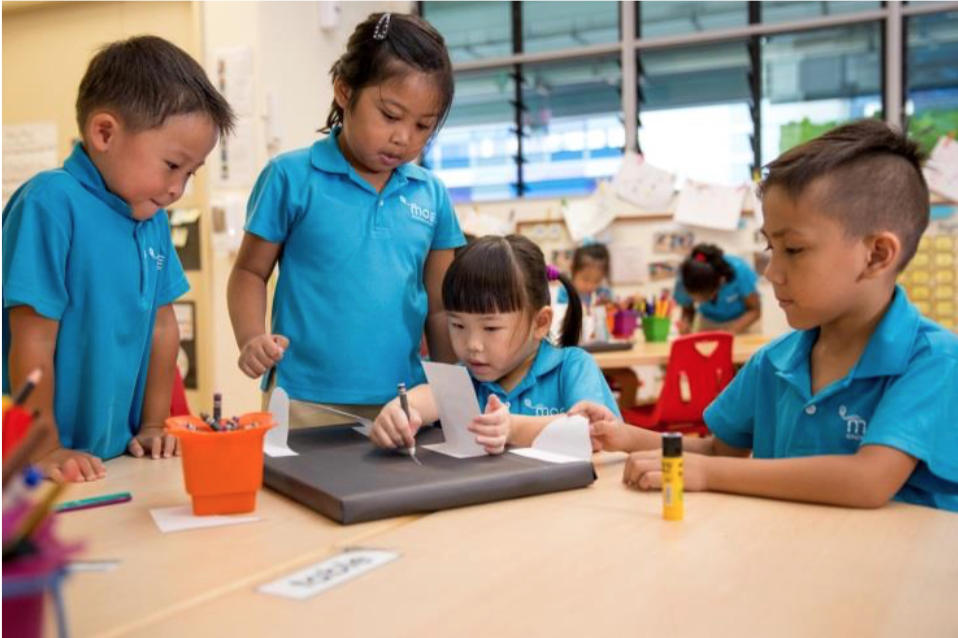 Children working in small groups Children working in small groups | 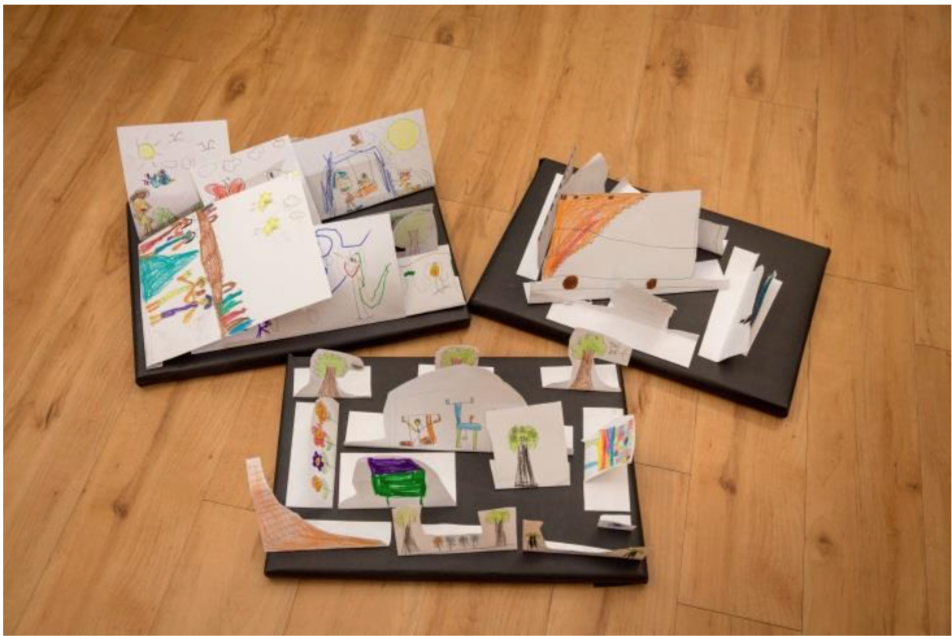 Models of their neighbourhood Models of their neighbourhood |
#4 Presenting their neighbourhood
Encourage children to communicate confidently by having them share their drawing/ model with another class or their parents!
You can guide the children to share about:
- Places in their neighbourhood and what people do at these places
- Why they chose these places and locations for their neighbourhood
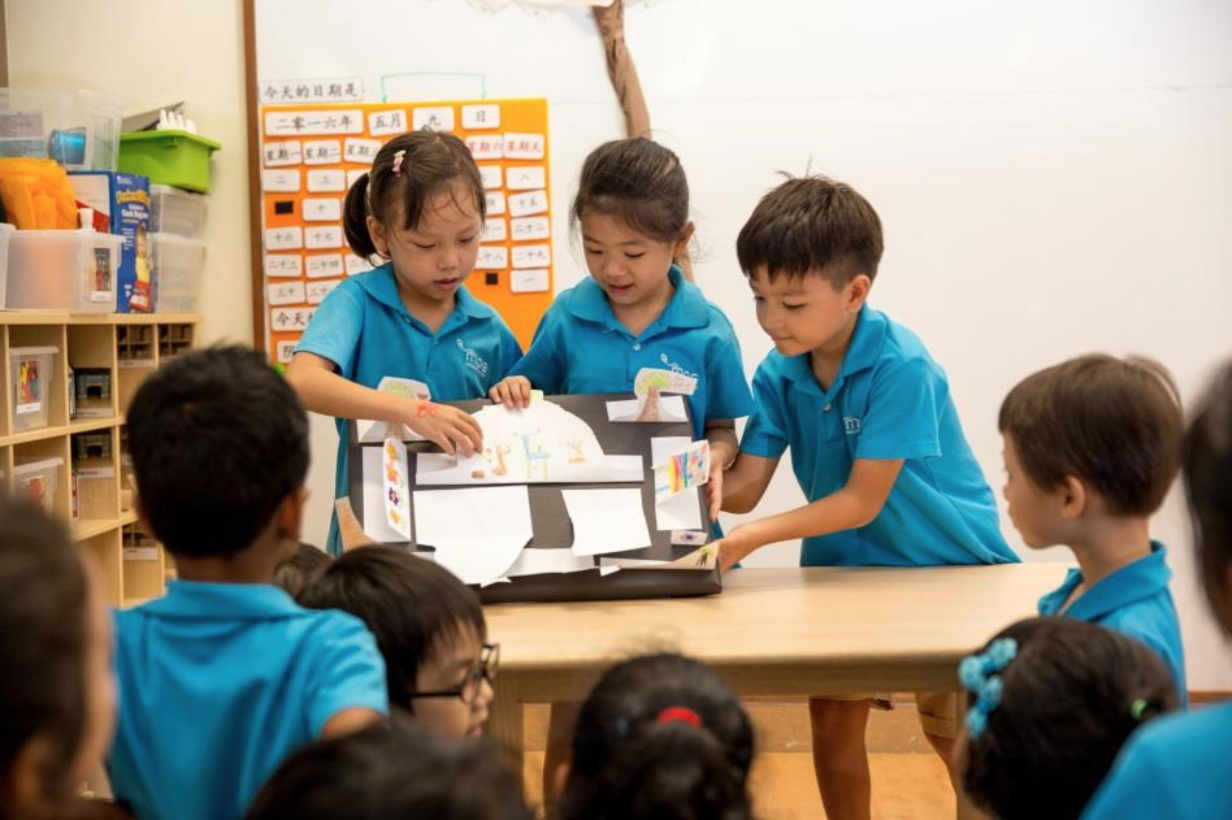 Children sharing what they had created
Children sharing what they had created